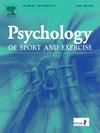Evaluating the benefits of green exercise: A randomized controlled trial in natural and built environments assessed for their restorative properties
IF 3.3
2区 心理学
Q2 HOSPITALITY, LEISURE, SPORT & TOURISM
引用次数: 0
Abstract
Exercising in natural environments (green exercise, GE) has been shown to offer significant physiological and psychological health benefits compared to urban or indoor environments. This study evaluated the restorative effects of a 1-h light-to-moderate intensity exercise session across three environments: natural (G), urban (U), and indoor (I).
Using a randomized crossover design, 25 male participants (M = 26.3, SD = 4.3) completed a 1-h walk at 6 km/h in each setting. Psychological outcomes, including perceived restorativeness (PRS), restoration (ROS), emotional states, enjoyment, and behavioral intentions, were assessed with validated questionnaires. Physiological measures (cortisol, heart rate, heart rate variability) were collected pre- and post-intervention.
Results showed that G environment consistently elicited greater relaxation, higher positive emotions, and lower negative emotions compared to U and I. Restoration outcomes (PRS, ROS), enjoyment and intentions to exercise were significantly higher in G, while perceived exertion was lower in G compared to I. Physiologically, cortisol levels, heart rate, and heart rate variability differed by environment, with G promoting a more favorable recovery profile than U and I. No interaction effects were observed for physiological measures, suggesting consistent recovery patterns over time.
These findings highlight the restorative and stress-relieving potential of GE, emphasizing its role in enhancing mental well-being and supporting physical activity adherence. The study underscores the importance of natural environments as a resource for promoting health and well-being, while also identifying the need for further research to clarify the nuanced differences between urban and natural settings.
评估绿色运动的益处:在自然和人造环境中评估其恢复特性的随机对照试验。
与城市或室内环境相比,在自然环境中锻炼(绿色锻炼,GE)已被证明能提供显著的生理和心理健康益处。本研究评估了在自然(G)、城市(U)和室内(I)三种环境中进行1小时轻至中等强度运动的恢复效果。采用随机交叉设计,25名男性参与者(M = 26.3, SD = 4.3)在每种环境下以6公里/小时的速度步行1小时。心理结果,包括感知恢复性(PRS)、恢复(ROS)、情绪状态、享受和行为意图,通过有效的问卷进行评估。在干预前后收集生理测量(皮质醇、心率、心率变异性)。结果表明,与U和i相比,G环境持续地引发更大的放松,更高的积极情绪和更低的消极情绪。恢复结果(PRS, ROS),享受和运动意图在G中显着更高,而感知运动在G中比i更低。与U和i相比,G促进了更有利的恢复曲线。在生理测量中没有观察到相互作用效应,表明随着时间的推移,恢复模式是一致的。这些发现强调了GE的恢复和缓解压力的潜力,强调了它在增强心理健康和支持坚持体育锻炼方面的作用。该研究强调了自然环境作为促进健康和福祉的资源的重要性,同时也确定了进一步研究的必要性,以澄清城市环境和自然环境之间的细微差别。
本文章由计算机程序翻译,如有差异,请以英文原文为准。
求助全文
约1分钟内获得全文
求助全文
来源期刊
CiteScore
6.40
自引率
5.90%
发文量
172
审稿时长
69 days
期刊介绍:
Psychology of Sport and Exercise is an international forum for scholarly reports in the psychology of sport and exercise, broadly defined. The journal is open to the use of diverse methodological approaches. Manuscripts that will be considered for publication will present results from high quality empirical research, systematic reviews, meta-analyses, commentaries concerning already published PSE papers or topics of general interest for PSE readers, protocol papers for trials, and reports of professional practice (which will need to demonstrate academic rigour and go beyond mere description). The CONSORT guidelines consort-statement need to be followed for protocol papers for trials; authors should present a flow diagramme and attach with their cover letter the CONSORT checklist. For meta-analysis, the PRISMA prisma-statement guidelines should be followed; authors should present a flow diagramme and attach with their cover letter the PRISMA checklist. For systematic reviews it is recommended that the PRISMA guidelines are followed, although it is not compulsory. Authors interested in submitting replications of published studies need to contact the Editors-in-Chief before they start their replication. We are not interested in manuscripts that aim to test the psychometric properties of an existing scale from English to another language, unless new validation methods are used which address previously unanswered research questions.

 求助内容:
求助内容: 应助结果提醒方式:
应助结果提醒方式:


